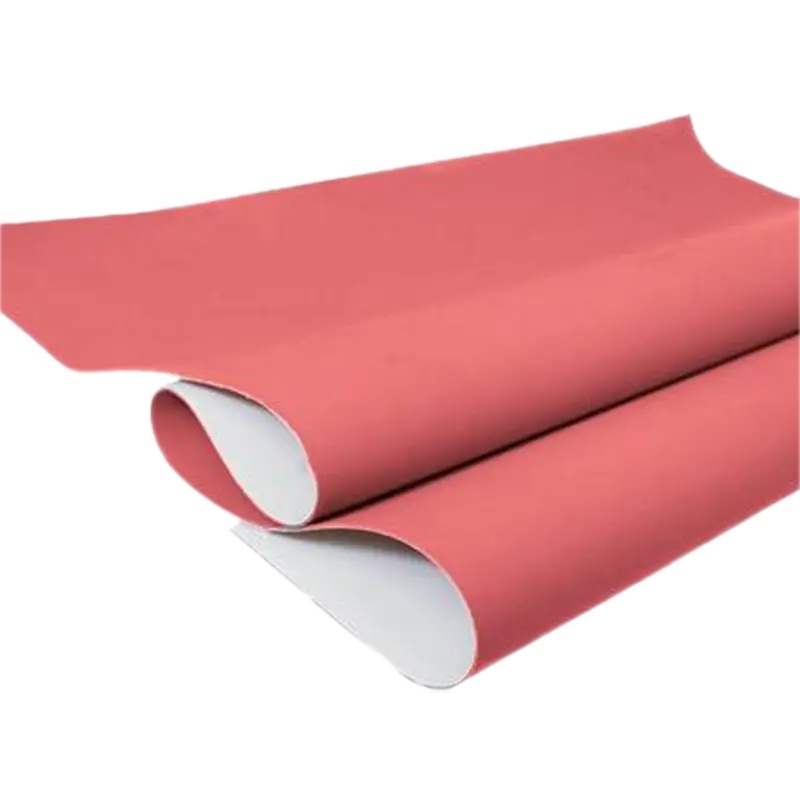Printing blankets are an important part of the printing industry, especially in the mixing printing process. They are the medium that transfers the ink from the printing plate to the substrate, whether it be paper, cardboard or other materials. The quality and type of printing blanket used can greatly affect the final print quality, so it is vital that printers understand the different types of blankets available. In this article will introduce the various types of printing blankets, their characteristics and their applications.
1. Rubber printing blankets
Rubber printing blankets are one of the most commonly used types in the printing printing industry. They are made from a variety of rubber compounds and have excellent ink transfer characteristics and durability. Rubber blankets are known for their elasticity and ability to withstand high pressures, making them suitable for a variety of printing applications.
Features
-Durability: Rubber blankets can withstand the wear and tear of tell-tale printing.
-Ink Transfer: Rubber Blankets have excellent ink transfer capabilities, ensuring vibrant and consistent prints.
-Versatility: suitable for a wide range of substrates including paper, cardboard and plastics.
Applications:
Rubber printing blankets are widely used in commercial printing, packaging and label printing. They are especially effective for printing on textured or uneven surfaces.
2. Polyester printing blankets
Polyester printing blankets are made of synthetic materials and have unique advantages over traditional blankets. These blankets are lightweight and have a smooth surface, which facilitates ink transfer and thus improves printing quality.
Features
-Lightweight: Due to their lighter weight, polyester blankets are easier to handle and install.
-Smooth surface: they provide a consistent and smooth surface for ink transfer, resulting in high quality prints
-Chemical resistance: polyester blankets are resistant to a wide range of chemicals and are suitable for different types of inks
Applications:
These blankets are typically used for high quality printing applications such as fine art prints and photo reproductions. Their smooth surface makes them ideal for capturing detailed images and fine lines.
You can take a look at this one from our company, LQ UV801 Printing Blanket

It is with below features,
Climate-neutral blanket, resistant to conventional, hybrid and UV inks and cleaning agents, reduces linting, minimal sinking throughout the life of the printing blanket, increased compressible layer thickness, excellent smash resistance.
3.Silicone Printing Blanket
Silicone printing blankets are known for their excellent heat resistance and durability. They are made of silicone rubber and can withstand high temperatures without losing structural integrity.
Features:
-Heat resistance: silicone printing blankets can withstand high temperatures and are therefore suitable for heat-set printing processes.
-Long service life: Due to their abrasion resistance, they have a longer service life compared to other types of blankets.
-Ink compatibility: silicone rubber blankets are compatible with a wide range of inks, including UV and solvent-based inks.
Applications:
Silicone printing blankets are commonly used for heatset web printing and other applications involving high temperatures. They are also suitable for printing on difficult substrates such as plastics and metallic materials.
4. Composite Printing Blankets
Composite printing guides combine different materials to take full advantage of each. Typically, they consist of a rubber backing and a polyester or silicone top layer. This combination improves performance in a variety of printing conditions.
Features:
-Enhanced performance: the combination of materials improves ink transfer and durability
-Versatility: Composite blankets can be customized to meet specific printing needs, making them suitable for a wide range of applications.
-Cost-effective: composite blankets often strike a balance between performance and cost, and are therefore favored by Godbeast printers.
Applications:
Laminated printing blankets can be used in a variety of printing environments, including commercial, packaging and specialty printing. Their versatility makes them suitable for high-speed and high-quality printing applications.
5. Specialty Printing Blankets
Specialty printing blankets are designed for specific applications or unique printing requirements. These blankets can utilize advanced materials or technologies to solve special challenges in the printing process.
Features:
-Customized solutions: specialty blankets can be customized to meet specific printing needs such as high speed production or unique substrate compatibility.
-Innovative materials: They can use advanced materials to enhance performance, such as anti-static properties or improved ink adhesion.
-Specialty applications: designed for special printing tasks, such as printing on textiles or non-porous surfaces.
Applications:
Specialty printing blankets can be used in niche markets including textile printing, digital printing and non-traditional substrate printing. Their unique properties make them ideal for specific printing challenges.
Understanding the different types of printing blankets is critical to obtaining optimal print quality and efficiency in the printing process. Each type of blanket (rubber, polyester, silicone, composite and specialty) has unique properties and benefits to meet a variety of printing needs. By choosing the right printing blanket for a specific application, printers can improve output quality, reduce downtime and ultimately increase profits. As the printing industry continues to evolve, staying up-to-date with the latest advances in printing tape technology is critical to maintaining a competitive edge.
Post time: Nov-11-2024
